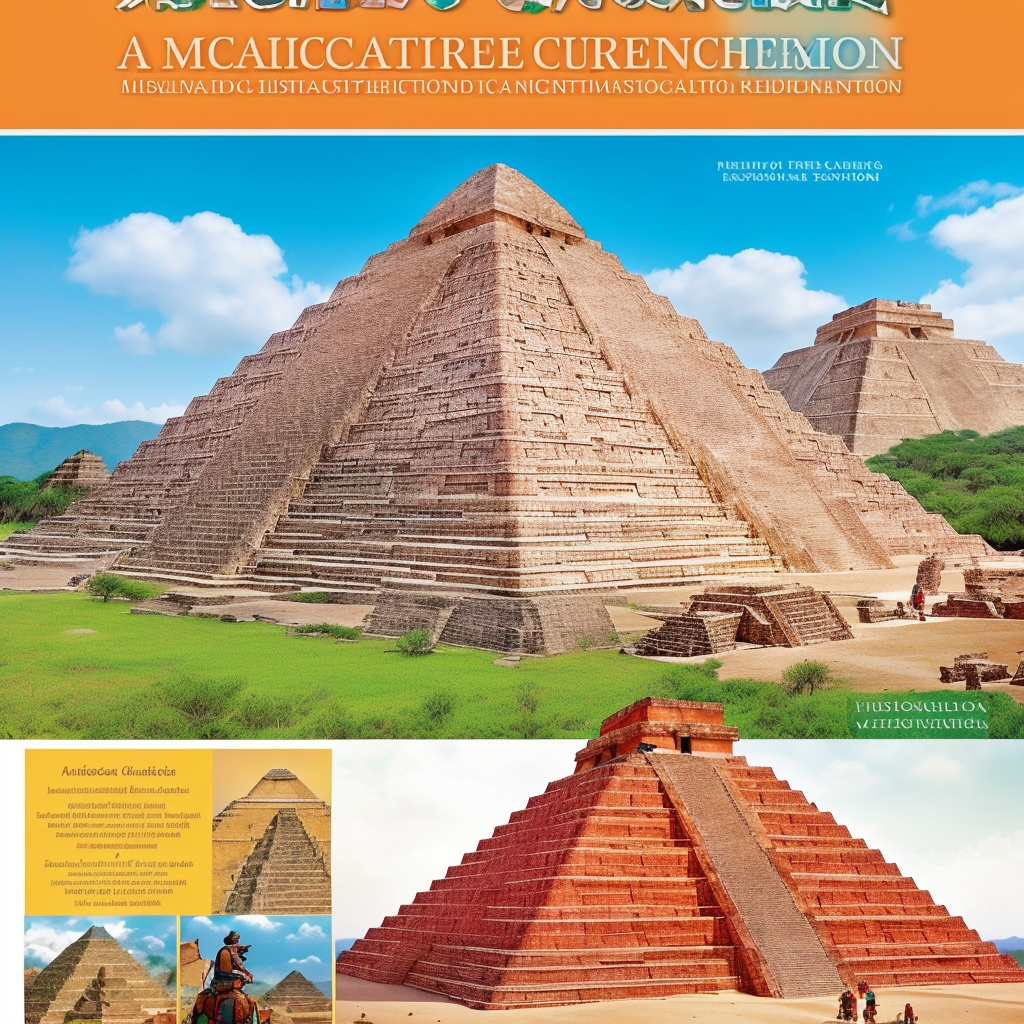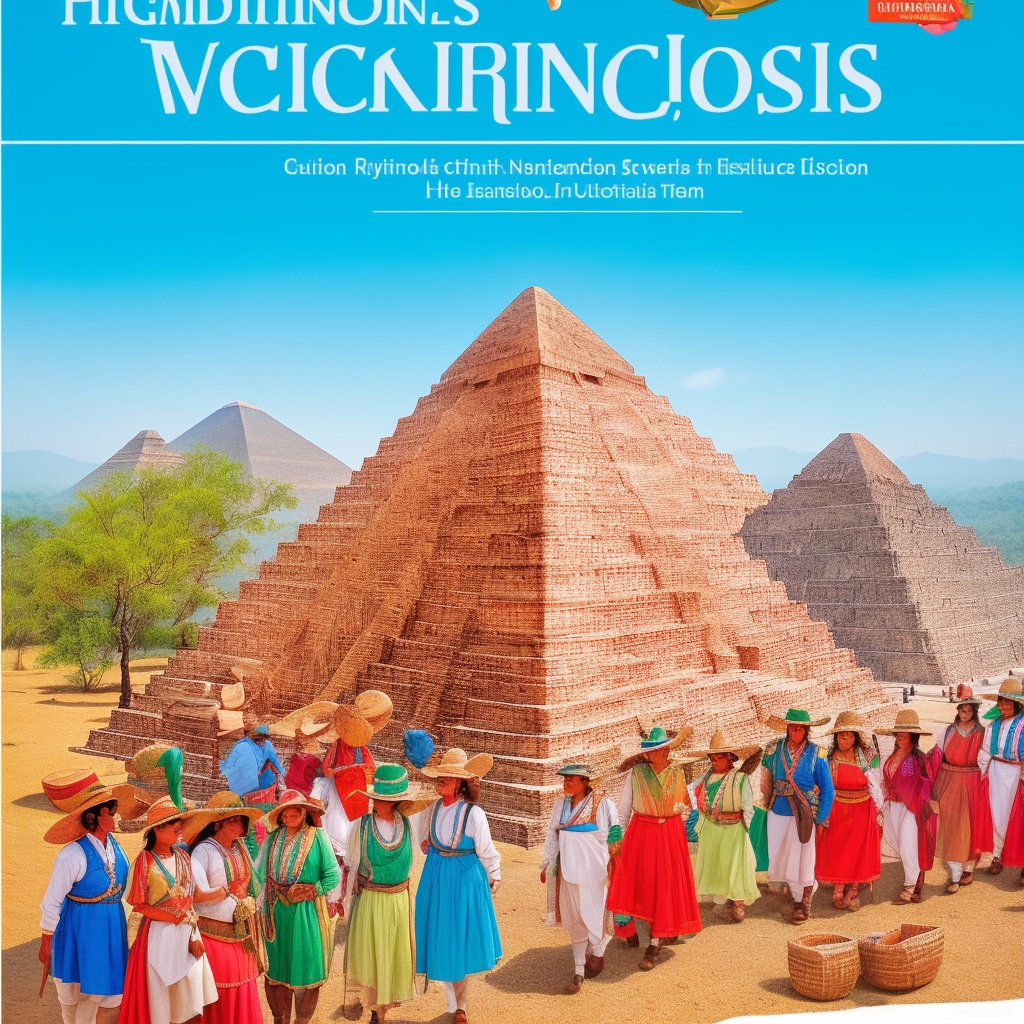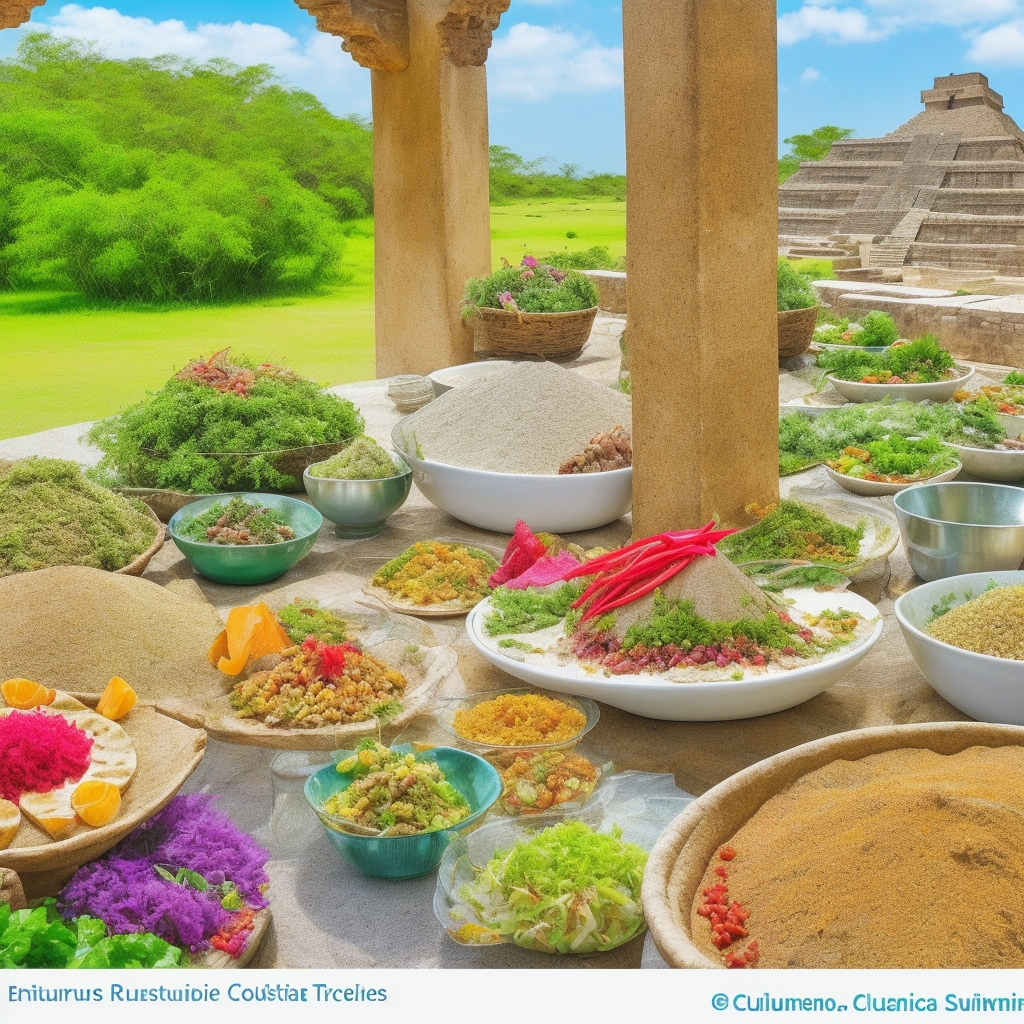The Unexpected Lessons from Ancient Mexican Pyramids
“So, you’re telling me they built pyramids too?” My friend Jamie raised an eyebrow, swirling his third cup of coffee as we sat in a bustling café. I’d just returned from a whirlwind trip to Mexico, a journey that truly opened my eyes to the astonishing architectural feats of ancient civilizations. Until then, like many, I’d always associated pyramids almost exclusively with Egypt. But, here’s the thing though, the ancient Mexicans had their own, and their contributions were, surprisingly, far more impactful than I ever imagined.
The misconception is understandable – when most people think “pyramid,” their minds immediately conjure images of the Great Pyramid of Giza or the Sphinx. But what I discovered in Mexico completely shattered that narrow perspective. The Mesoamerican civilizations didn’t just build pyramids; they revolutionized the entire concept, creating structures that served multiple purposes far beyond what their Egyptian counterparts achieved.
The Call That Changed Everything
It all started with a phone call that honestly threw me off balance. “Hey, we’ve got a project that’s hitting a wall,” my colleague, Sarah, said. “We need someone with your expertise in historical contexts to figure out what’s going wrong.” I was intrigued, and yeah, a little nervous. This wasn’t my usual gig at all. The project involved understanding how ancient Mexican civilizations contributed to pyramid construction, and to be perfectly frank, it had been a quiet dream of mine to dive into something exactly like this.
Sarah explained that their team had been struggling to contextualize the significance of Mesoamerican pyramids within a broader global architectural narrative. “We keep getting pushback from clients who think we’re overstating their importance,” she admitted. “They see them as derivative of Egyptian models, not innovations in their own right.” That’s when I knew this project would be more than just academic research – it would be about changing fundamental perceptions.
Two weeks later, I was on a plane to Mexico, feeling a vibrant mix of excitement and anxiety. I’d certainly done my homework, but there was just so much I didn’t know. What if I missed something crucial? What if I couldn’t connect the dots in a way that truly mattered? The flight gave me time to review my notes on the major sites: Teotihuacan, Chichen Itza, Palenque, El Tajín, and Cholula. Each represented different civilizations, different time periods, and different approaches to pyramid construction.
Awe at Teotihuacan: Beyond Mere Construction
The first site I visited was Teotihuacan, famously known as the “City of the Gods.” Walking down the Avenue of the Dead, flanked by the colossal Pyramid of the Sun and the equally imposing Pyramid of the Moon, I was absolutely struck by their sheer size and remarkable symmetry. “How did they manage this?” I muttered to myself, utterly in awe.
“It’s a marvel, isn’t it?” a local guide named Luis said, overhearing my musings. “The Teotihuacanos built these pyramids around 200 AD. They were masters of urban planning, utilizing an intricate grid system that was truly unheard of at the time.” What’s interesting is that recent research, like a 2024 study by Ismael Arturo Montero García and his team, suggests that the Pyramid of the Moon actually served as the city’s primary astronomical orientation axis, aligning perfectly with the solstices. This fascinating insight challenges older theories that focused primarily on the Pyramid of the Sun.
Luis continued, pointing toward the intricate details I hadn’t initially noticed. “See how the pyramids aren’t just isolated monuments? They’re integrated into a comprehensive urban design that housed over 100,000 people at its peak.” The Pyramid of the Sun, standing at 216 feet tall with a base covering 733 by 761 feet, wasn’t just impressive for its size – it was remarkable for how it functioned within the city’s ecosystem. Unlike Egyptian pyramids, which served primarily as tombs, these structures were active ceremonial centers, accessible to the public through elaborate staircases and platforms.
As Luis’s words sunk in, I realized something profoundly significant: the ancient Mexicans weren’t just builders; they were visionary innovators. They didn’t just copy Egyptian pyramids; they redefined them, integrating their unique engineering, profound astronomical knowledge, and distinct cultural practices. We’re talking about a civilization that also developed unique residential apartment compounds, a true urban planning innovation for its era. The famous “apartment compounds” of Teotihuacan, like those at Tetitla and Atetelco, featured sophisticated drainage systems, interior courtyards, and elaborate murals – urban planning concepts that wouldn’t appear in Europe for another thousand years.
The Human Touch: Ingenuity in Every Stone
As the days passed, I delved deeper into their ingenious methods. The Teotihuacanos, for instance, used tools crafted from obsidian – a volcanic glass – and developed a sophisticated technique to layer volcanic stone with lime plaster. This wasn’t just about aesthetics; this gave their pyramids a smooth, durable finish that not only looked impressive but was also structurally sound and incredibly resilient. They even used a lightweight, porous volcanic rock called tezontle as a primary building material, sourced locally, which speaks volumes about their resourcefulness. I couldn’t help but think of how often we underestimate ancient technologies simply because they lack the flashy modern flair.
The engineering sophistication became even more apparent when I learned about their construction techniques. Unlike Egyptian pyramids built with massive stone blocks, Mesoamerican pyramids employed a talud-tablero architectural style – alternating sloped and vertical panels that not only created visual appeal but also provided superior earthquake resistance. Given Mexico’s seismic activity, this wasn’t just aesthetic choice; it was brilliant structural engineering. The builders also incorporated sophisticated drainage systems within the pyramid cores, preventing water damage that has plagued many other ancient structures.
One day, I found myself in a small village nearby, sharing a meal with a family who descended from the Totonacs, another ancient group renowned for the El Tajín pyramids. “We’ve lost some of the old ways,” the grandmother said, her eyes misty. “But the spirit of creation, that lives on.” Her words were a powerful reminder that these monumental structures were more than just buildings; they were a living testament to human ambition, ingenuity, and enduring resilience across millennia.
The grandmother, whose name was Elena, shared stories passed down through generations about the Pyramid of the Niches at El Tajín. “My great-grandmother told me that each niche represented a day of the year,” she explained, referring to the pyramid’s 365 niches that correspond to the solar calendar. “But it was more than counting days – it was about understanding our place in the cosmos.” This conversation illuminated something crucial: these pyramids weren’t just architectural achievements; they were sophisticated astronomical instruments and calendrical computers.
The Messy Middle: Chasing Shadows and Finding Clarity
But, as with any deep dive into history, it wasn’t all smooth sailing. As I pieced together these incredible stories and techniques, I hit several frustrating dead ends. Some records were incomplete, and frankly, many theories were just that—theories. At one point, I was practically buried in a mountain of texts, feeling like I was chasing shadows. I seriously questioned my ability to bring something truly meaningful to the table. How could I tell a coherent story that even seasoned experts couldn’t fully agree on?
The challenge was particularly acute when trying to understand the relationship between different Mesoamerican civilizations. Did the Maya learn from Teotihuacan? Were the Zapotecs at Monte Albán influenced by earlier Olmec pyramid-building traditions? The archaeological record was frustratingly fragmented, with competing theories about cultural transmission, independent innovation, and chronological sequences.
I spent hours in the library at the National Museum of Anthropology in Mexico City, poring over research papers that contradicted each other. One study would argue for direct cultural influence between civilizations, while another would present evidence for independent development. The more I read, the more confused I became. Was I supposed to pick a side in these academic debates, or was there a way to acknowledge the complexity without oversimplifying?
During a particularly frustrating day, Jamie called. “You sound like you’re in a funk,” he said. “Remember, it’s not about having all the answers. It’s about understanding the journey, the process of discovery.” He was absolutely right. I was so fixated on finding definitive, black-and-white answers that I was missing the bigger, more human picture of historical inquiry.
That conversation shifted my perspective entirely. Instead of seeing the contradictions and uncertainties as obstacles, I began to view them as evidence of the rich complexity of Mesoamerican civilizations. These weren’t monolithic cultures following a single blueprint; they were diverse, innovative societies that approached pyramid construction with different purposes, techniques, and cultural meanings.
Resolution and Insights: A Legacy of Innovation
On my last day in Mexico, I visited the Great Pyramid of Cholula. Here’s the kicker: it’s actually the largest pyramid by volume in the world, boasting an astounding 4.45 million cubic meters, making it nearly twice the volume of Egypt’s Great Pyramid of Giza. Yet, it’s mostly hidden under what appears to be a natural hill, topped by the beautiful church of Nuestra Señora de los Remedios. Standing there, on its summit, I finally understood. The ancient civilizations of Mexico didn’t just contribute to pyramid construction; they left a sprawling legacy of innovation, resilience, and cultural depth that resonates powerfully through time. It’s a monument that grew in six phases over centuries, built by different peoples, a true testament to continuous human endeavor.
The Cholula pyramid perfectly encapsulated everything I’d learned about Mesoamerican innovation. Built over approximately 1,000 years by successive civilizations – including the Olmecs, the people of Teotihuacan, and later the Toltecs and Aztecs – it represented a completely different approach to monumental architecture. Rather than building a single, perfect structure like the Egyptians, Mesoamerican cultures created living monuments that evolved with their societies.
What struck me most was the pyramid’s integration with the natural landscape. The Spanish colonizers, unable to destroy such a massive structure, simply built their church on top, creating an unintentional symbol of cultural layering that defines Mexican history. This wasn’t destruction; it was transformation – something that seemed to characterize the entire Mesoamerican approach to architecture and culture.
Back home, as I recounted my journey to Jamie, I felt a profound sense of fulfillment. The project taught me that history isn’t just about dry facts and dusty figures; it’s about the vibrant stories, the ingenious solutions, and the very human experiences that have shaped our world. And while I didn’t solve every single mystery, I came back with a significantly richer understanding and a far deeper appreciation for the brilliant people who walked these lands long before us. What’s more, recent archaeological discoveries, like the 2025 unearthing of a Teotihuacan-style altar in the Maya city of Tikal, continue to reveal just how far-reaching their influence was across Mesoamerica, hinting at complex, sometimes turbulent, cultural exchanges.
The Tikal discovery was particularly significant because it provided concrete evidence of the cultural networks that connected Mesoamerican civilizations. The altar, featuring distinctive Teotihuacan iconography but executed in Maya artistic style, suggested that these civilizations weren’t isolated entities but part of a sophisticated web of trade, diplomacy, and cultural exchange that spanned thousands of miles.
Reflections: What I’d Do Differently
If I could go back, I’d definitely embrace the uncertainties sooner, recognizing that it’s perfectly okay to not have all the answers laid out neatly. I’d spend even more time listening to the stories of the local people, as they truly hold the authentic essence of their ancestors’ achievements. And I’d always remember that sometimes, the journey itself, with all its perplexing twists and turns, is the most valuable part.
I’d also dedicate more time to understanding the astronomical alignments that permeate Mesoamerican pyramid design. Every major site I visited incorporated sophisticated celestial observations – from the Venus alignments at Chichen Itza’s El Castillo to the Pleiades orientations at various Teotihuacan structures. These weren’t just religious symbols; they were practical tools for agricultural timing, ceremonial scheduling, and long-term calendar keeping that rivaled any ancient civilization’s achievements.
Another aspect I’d explore more deeply is the acoustic engineering of these pyramids. At Chichen Itza, clapping at the base of El Castillo produces an echo that mimics the call of the quetzal bird, sacred to the Maya. At Teotihuacan, certain chambers create resonance effects that amplify human voices. These weren’t accidents – they were deliberate design features that enhanced the ceremonial and spiritual functions of these structures.
So, would I do it all over again? Absolutely. And next time, I’d bring Jamie along for the ride. His perspective on embracing uncertainty and focusing on the human journey rather than just the destination would have made the entire experience even richer from the start.
- Tags: Ancient Civilizations, Pyramid Construction, Mexican History, Teotihuacan, Cultural Legacy, Mesoamerican Architecture, Archaeological Innovation







